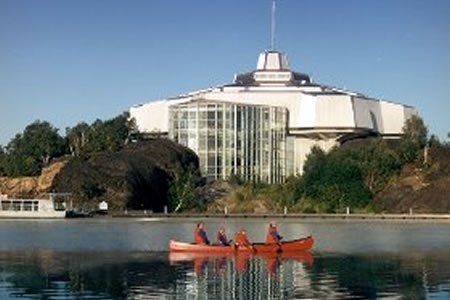The City of Greater Sudbury's tourism industry partnership has laid out its plans until 2015, which include no less a goal than transforming the city into one of Ontario's top four visitor destinations.
Drawing parallels between Mount Rushmore in South Dakota, Disney World in Florida and even Science North in Sudbury, local tourism officials illustrated how this kind of bold vision is needed to achieve great things.
"It would be wildly optimistic for us to think we can attract more visitors than places in the province like Toronto or Niagara Falls or Ottawa," says Rob Skelly, manager of tourism, culture and marketing with the City of Greater Sudbury.
"But if we can monitor all of the metrics while monitoring what comes to top of mind when we ask people in Ontario what they think of a tourism destination in the province, and if Sudbury is coming up in that top four, we believe we'll have reached our goal."
Known as Destination Sudbury 2015, this long-term plan was presented at the 2008 Greater Sudbury Tourism Forum by Sudbury Tourism, an organization made up of 70 local businesses in conjunction with the city.
To try and achieve this lofty objective, the group identified two separate goals: the enhancement of its organization, as well as the development of strategic marketing programs.
In fact, work on this approach to marketing has already begun, with specific research and the targeting of "best bet" markets already underway.
Chloe Gordon, co-chair of Sudbury Tourism and executive manager of the office of the CEO at Science North, says studies have shown that 88 per cent of visitors to the city come from other parts of Ontario. Of that number, 40 per cent of overnight visitors come from northeastern Ontario, with 24 per cent arriving from the Golden Horseshoe to the south.
This represents a key element for further marketing efforts, says Gordon, referring to southern Ontario as the "bread and butter" of Sudbury tourism.
Related work has already begun on reaching the vast numbers of new Canadians and minorities landing in southern Ontario which represent a "huge untapped market," with roughly 500,000 Chinese people in the Toronto area alone.
Recently, representatives from a television station and newspaper representing the Chinese-speaking market were brought to Sudbury to push editorial content about the region. This content has since been delivered through the two media outlets, which have since been followed up by advertisements placed by Sudbury Tourism.
Four more advertising insertions are scheduled to run in the coming months.
Other key markets are being examined, such as travel tours, sporting events, meetings and conventions as well as leisure markets.
More than 40 per cent of visitors to the city are made up of visiting friends and family, says Gordon, making it ever more important to increase citizens' awareness of potential tourism offerings.
This kind of work complements other approaches to be taken under the marketing wing, including the development of new tourism packages to be made available online.
However, marketing alone cannot sustain visitor growth, says Travelodge Hotel general manager Carla LaCelle. The increase must also be partially driven by strengthening the organizational development of Sudbury Tourism.
This means expanding the group's membership to become more inclusive. Research has shown that there are more than 300 potential tourism members within the city, some of which may lay beyond traditional ideas of tourism-related partners, says LaCelle.
As a result, the group must consider reaching out to educational institutions as well as various media and large corporations, such as Vale Inco and Xstrata Nickel, who share a need to promote the city as a good place to live and work.
Providing the partnership with additional sources of revenue is also identified as a driving factor. Currently, funding for the partnership stems largely from city budgets, to the annual tune of $700,000.
However, Sault Ste. Marie has a destination marketing budget roughly twice that of Sudbury, due to the presence of a 3 per cent fee spread across local hotel accommodations. This is an idea that Sudbury Tourism is going to "cautiously explore" over the next year alongside new funding opportunities and sponsorship alternatives, LaCelle says.
www.sudburytourism.ca
www.city.greatersudbury.on.ca




